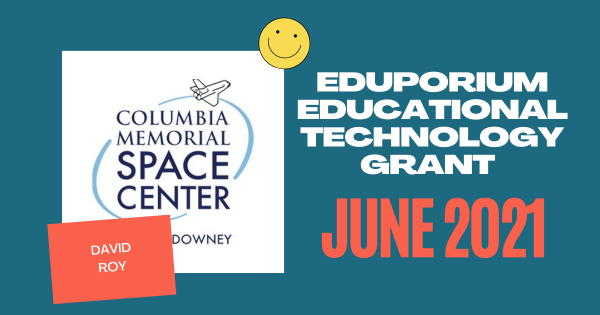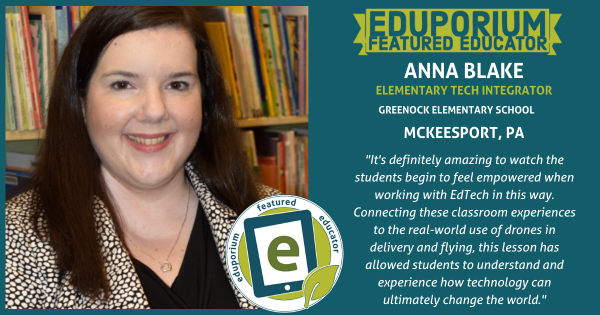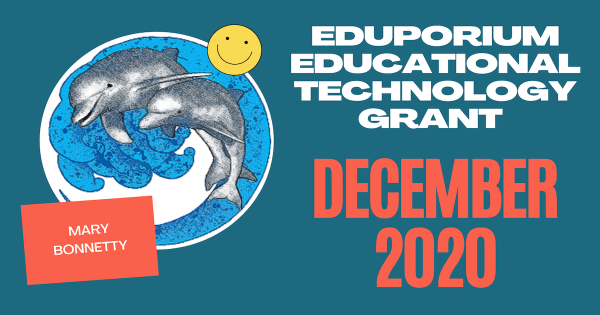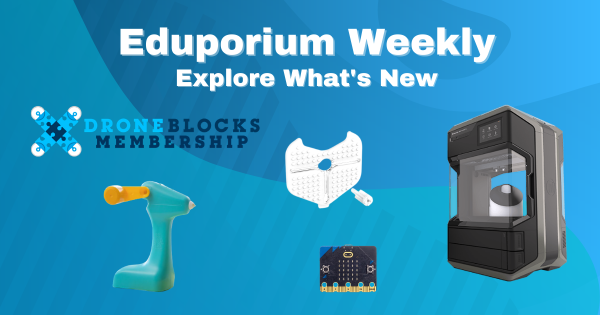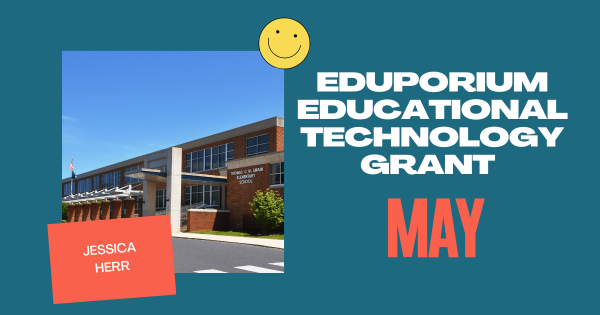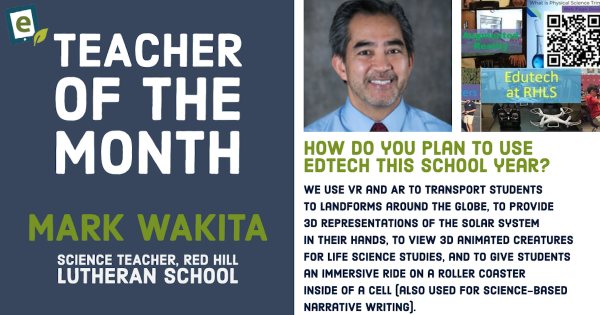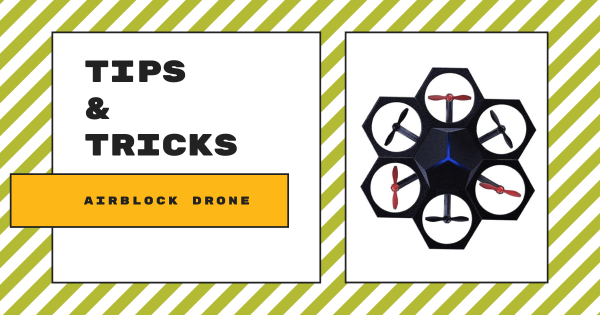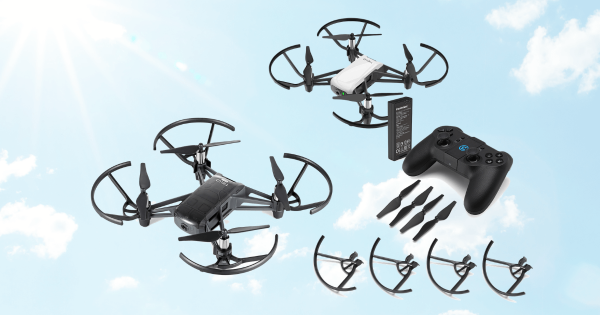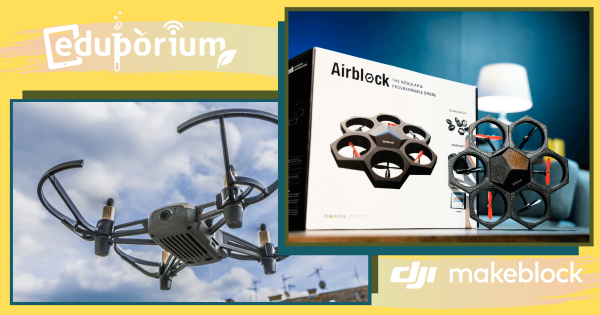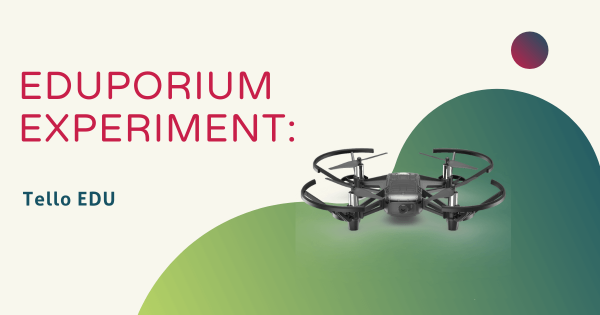David is largely responsible for creating valuable afterschool STEM opportunities for students. Through the Maker Mentor Program, in particular, he’s helped connect students with makers in their community. Read on to learn more about him, including his plans for teaching with drones and 3D printers as well as what he’ll receive from us.
Drones
With so many connections to technology and innovation, drones continue to positively impact STEM education. Two of the biggest benefits of drones in education include helping students to learn coding skills and helping to expose them to exciting future careers. And, though it may be surprising, not all educational drones are complex. In fact, the best drones for students are actually super easy for anybody to use. Beginning in upper elementary school, teachers can work with students and incorporate drone lessons in their classroom STEAM curriculum, as part of afterschool clubs, or in both. This helps students develop crucial 21st century skills, like coding, collaboration, computational thinking, and more. Plus, students can fly them indoors or outdoors and take on any challenges that are appropriate for them.
Perfect for computer science classes, programmable drones are quite valuable for 21st century learning. With solutions like the CoDrone EDU or RubiQ devices, students could completely control the flight paths and movements of their UAVs using code they create—perfectly combining two incredibly relevant areas of STEM. Plus, these drone kits are available as standalone units or as classroom-sized packs. And, some of these also include in-depth curriculum guides, professional development materials, and even safety training resources. With these components, middle school, high school, and CTE instructors can create all-new classes or additions to the STEM curriculum. Browse our content to find tips and tricks as well as inspiration for aligning piloting and engineering with problem solving. And, find all our classroom drones on our store.
-
Eduporium Featured Educator: Anna Blake
This month, we hear from Anna Blake, who’s an elementary school technology integration specialist in the Elizabeth Forward School District (PA). Among some of the projects she’s helped lead with her students include combining coding and drones using Swift and challenging students to create programs to pilot their drones! -
EdTech Grant For December Awarded To Mary Bonnetty
We’re happy to announce that we have awarded our final EdTech grant of 2020 to Mary Bonnetty, an elementary teacher from Honolulu, Hawaii! Mary teaches at the Queen Ka’ahumanu Elementary School and has made a huge impact on the STEM offerings her students get to experience whether learning in-person or remotely. -
Eduporium Weekly | 5 New STEM And EdTech Tools On Our Store
Our one-stop shopping experience is a favorite among K-12 tech teachers and specialists and our Educator Discount on technology and quoting help make it easier to obtain STEM tools from various manufacturers and STEM disciplines in one place. So, what’s among the newest offerings we’re able to provide for students involved in remote, hybrid, or in-person learning? -
Grant Award for May: And, It Goes to Jessica Herr!
For the month of May, the award has been given to Jessica Herr, a teacher at the TC McSwain Elementary School in Staunton, Virginia! With the STEAM tools she’ll be receiving from us, Jessica has a pretty amazing project planned—one that involves drones, coding, bees, and plenty of collaboration for students. -
Eduporium Featured Educator: Mark Wakita
Every month, we are highlighting the work of an educator who is effectively utilizing EdTech solutions to empower his or her students with greater 21st century STEM learning experiences. And, this month, we’re featuring Mark Wakita, a science teacher from California, who loves using drones, VR, AR, coding, and movie making to enhance student learning in his classroom! -
Tips & Tricks | Makeblock Airblock Drone
The Airblock drone from Makeblock is not your average drone—it’s made of magnetic foam pieces and it’s programmable! It has one core module and six power modules that connect via magnets to build a drone, hovercraft, and other DIY configurations. Students can control Airblock using the Makeblock app for easy programming and piloting. -
Eduporium Weekly | Exploring Features of the Tello EDU Drone
Within the last couple of months, we’ve been able to take our partnership with DJI further by adding their new Tello EDU drone to our store. This drone is designed specifically for use in education and combines elements of both piloting and programming. Students can use two different apps to create simple programs in Swift, Python, or Scratch. -
The Best Part of STEM: Drones and Programming
These days, flying drones involves more than just controlling its height and movements with a remote control. Some more advanced drones can be programmed to complete short flights, snap photos, and show students how coding and drone navigation are related. Head inside to learn about some of the best. -
Eduporium Experiment | Tello EDU Drone
There have been a few programmable drones around for a bit now, but we were recently able to add the Tello EDU drone to our store and its incredibly affordable for also being programmable. So, our next step was to take it for a test flight and see what STEM learning in the classroom would be like with this compact




